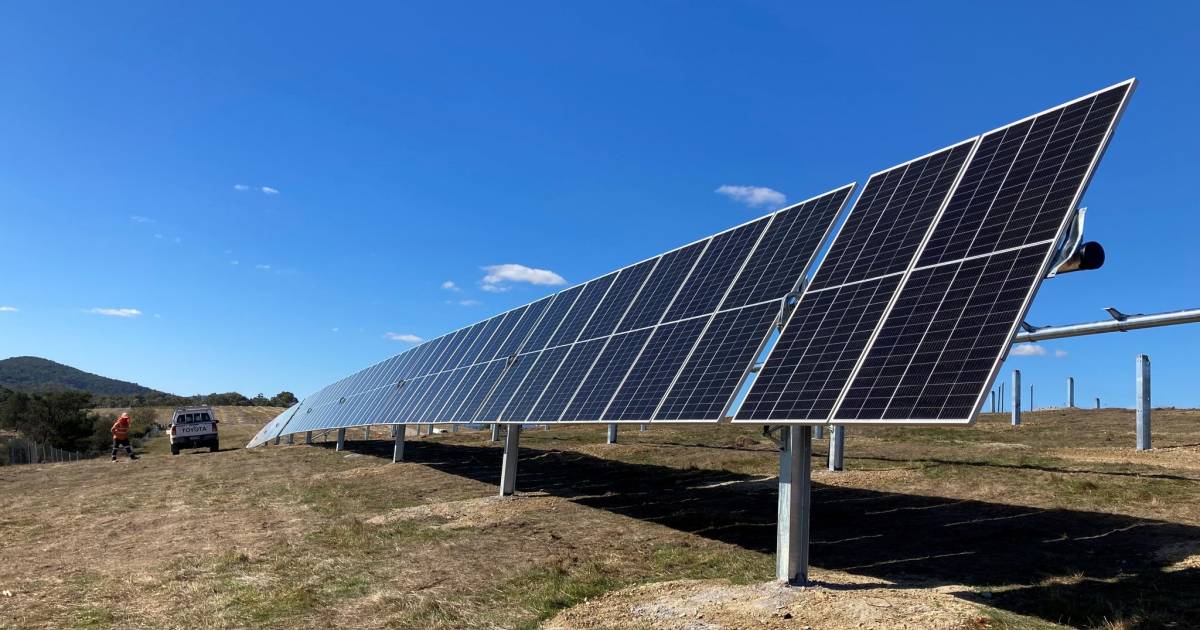
Melbourne Water has announced the installation of the first row of solar panels for its Winneke Water Treatment Plant solar farm – and many thousands more panels will soon follow.
The Winneke Water Treatment Plant is located near the Sugarloaf Reservoir at Christmas Hills, which is around 35 kilometres north-east of Melbourne’s CBD. The plant, constructed in 1980, was the first to supply Melbourne with fully treated water and currently treats around a quarter of drinking water bound for the many taps of Australia’s second-largest city.
Melbourne Water’s mention about the “golden row” milestone indicates the solar farm will boast 6 MW capacity – but elsewhere capacity is noted as 9MW. Approximately 20,000 solar panels will be installed as part of the project, which is expected to be operational by early to mid-2023.
Winneke’s Big Solar Brother
Around 62 kilometres from the Winneke project by road is a much larger Melbourne Water solar project at the Eastern Treatment Plant in the suburb of Bangholme. To be among the biggest behind-the-meter PV projects in Australia, construction of the 18MW solar farm (~39,000 solar panels) began last year.
While there hasn’t been any recent news on progress, it was previously expected to be completed around the middle of this year – Eastern’s “golden row” was completed in September 2021.
Melbourne Water’s Path To Net Zero
The Winneke and Eastern water treatment plant projects are part of Melbourne Water’s move towards net zero carbon emissions, something the organisation is looking to potentially achieve by 2030 if possible; but it has committed to halve its emissions by 2025.
Achieving net zero by 2030 would be no mean feat. Victoria’s water sector is the single largest contributor to the State Government’s total carbon emissions, and Melbourne Water accounts for around half of the state’s water sector’s emissions.
The Victorian Government notes while total emissions change on an annual basis, the state’s 18 water corporations released almost one million tonnes of carbon dioxide equivalent (CO2e) greenhouse gases in the 2019/20 financial year.
These two solar projects aren’t the only renewables in Melbourne Water’s energy generation portfolio. There are also a bunch of mini-hydro power stations generating 60 gigawatt-hours of electricity annually, and biogas captured from sewage treatment used for electricity generation contributes 80% of the Western Treatment Plant’s and 30% of the Eastern Treatment Plant’s electricity requirements.
The Winneke and Eastern treatment plant PV power stations are expected to kick in another 44.6 gigawatt-hours of clean electricity annually – that’s enough to power around 7,700 households.
Melbourne Water’s other emissions reduction efforts include a shift to EVs – it intends transitioning to a fully electric vehicle fleet by 2030. Last year the organisation said it will no longer purchase any additional combustion engine vehicles where a zero emissions electric vehicle alternative is available.
“By reducing our greenhouse gas impacts we are doing our bit to preserve Melbourne’s liveability for future generations.”
More information on Melbourne Water’s Path To Net Zero can be found here.

 RSS - Posts
RSS - Posts



Speak Your Mind